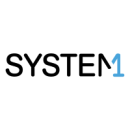AI isn’t just a tool; it’s a partner in progress. From the mundane to the magnificent, its influence permeates every facet of professional life — not only shaping what we do, but also how we do it.
While much is said about its broader transformative potential, beneath the surface lies a subtle revolution shaping the very essence of daily work routines. By automating repetitive tasks, these tools empower tech professionals to reclaim time lost and dive deeper into creativity.
Even in the creation of this very article, AI has left its mark. Whether it’s through leveraging Grammarly to refine language or deploying generative AI for content ideation, the objective remains the same: to enhance productivity and elevate the quality of output.
Recently, Built In had the opportunity to sit down with several tech professionals who shed light on how they harness these tools to carve out more space in their busy schedules.
ThousandEyes delivers visibility into digital experiences delivered over the internet.
How did you begin using AI in your role? What specific tools and processes do you utilize?
My primary use of AI involves refining text. Although I always draft the content myself, I rely on ChatGPT to enhance readability, correct grammar and polish the writing. This allows me to focus on the content itself while ensuring clarity and coherence. I find ChatGPT useful as a search engine, particularly when I need to grasp high-level concepts quickly, but for detailed and intricate information, its accuracy tends to diminish — I always cross-check ChatGPT results with reliable resources.
How has using AI simplified or streamlined your work?
Although my coding tasks have reduced, I occasionally need to write simple scripts for basic analyses or specific queries. In such cases, ChatGPT assists in quickly outlining a basic structure, after which I fill in the details. It’s especially handy when I’m exploring different libraries or need sample code suggestions, but one must be careful never to input proprietary code.
What recommendations do you have for tech professionals interested in using AI tools in their daily work?
While these tools can be valuable for streamlining workflows and providing insights, it’s important to remember their limitations. These tools can produce inaccuracies and errors, and there’s often a risk of exposing sensitive information. That’s why it’s best to use these tools as aids before overseeing and verifying the work they produce.
“It’s best to use these tools as aids before overseeing and verifying the work they produce.”
Dropbox provides a collaboration platform worldwide.
How did you begin using AI in your role? What specific tools and processes do you utilize?
My role at Dropbox has always centered around integrating AI features, but it wasn’t until a few years ago that I truly harnessed their power. Each day, I rely on these tools to tackle tasks from routine coding to more creative jobs. Not only do they excel in automating repetitive tasks — such as code autocompletion and logging statements — but they also prove invaluable when crafting structured query language queries to navigate our data pool or decipher code in less familiar languages. Working with these tools is a collaborative process, constantly refined through ongoing conversation.
“Working with these tools is a collaborative process, constantly refined through ongoing conversation.”
How has using AI simplified or streamlined your work?
The integration of these tools has revolutionized my workflow and transformed how I approach problem-solving. Instead of scouring Google or Stack Overflow for solutions, I’m able to engage in tailored conversations and provide contextualized queries that yield personalized responses. This streamlined approach not only expedites issue resolution but also frees up mental bandwidth for deeper exploration. Once laborious tasks are now as simple as expressing my needs in natural language, which enables me to delve deeper into result interpretation and creative ideation. That said, it’s crucial to maintain a balanced reliance on these tools, as they’re not infallible.
What recommendations do you have for tech professionals interested in using AI tools in their daily work?
I recommend an exploratory approach. Try out a variety of tools to understand their capabilities and identify repetitive tasks or pain points and gradually integrate these solutions into your workflow. Staying on top of AI advancements and seeking out training resources can also enhance proficiency.
AI can streamline processes and cultivate a culture of innovation and collaboration, but be cautious about sharing sensitive data when using these tools; refrain from divulging confidential information and anonymize data when seeking assistance.
General Motors’ vision is to create a world with zero crashes, zero emissions and zero congestion.
How did you begin using AI in your role? What specific tools and processes do you utilize?
I've built ML and AI level systems for some big brands over the years, so I have some history there. There have been a lot of good efforts and learnings that happened along the way. While those were important, I have to say that ChatGPT was clearly seismic. The world just felt a little different that day and ever since. It will transform how we do our work. CoPilot truly opened our eyes to the potential at scale and it’s a great start. It not only allows us to be more efficient in our work, it also allows us to create better standards in coding across our team. We happen to feel that the ability to really ground the responses in our processes (CICD with LLM capabilities) will be a huge productivity lift for our analytics organization. I can already see the our work bending in a new direction.
How has using AI simplified or streamlined your work?
GM has a lot of brilliant folks working on problems. We are lucky to have them. The challenge that will be familiar to folks is that the "conversion rate" of brilliance into production grade solutions, is not 100% (to put it mildly). Every organization has its shiny objects, and most struggle with how you truly drive scale through those applications. While my job still has a lot to do with the "how to convert," AI is playing an increasing role as the "most helpful coach" regarding every step of the development process. We are implementing what would be seen as a "full development lifecycle" AI approach. As the conversation rate goes up on the "how to" - more time can be focused on bigger and bigger problems. Maybe that is not a "simpler" world, but it certainly is a better one.
“Now, much of this can be automated, allowing for more time to focus on more complex problems.”
What recommendations do you have for tech professionals interested in using AI tools in their daily work?
Always start from the business problem: what the business cares about and how we can drive sales or mitigate costs. If you start with these tools, you run the risk of chasing shiny objects. "Lean in" certainly comes to mind. But this has to be evened out with the "pragmatist’s mind" -- so surrounding yourself with operators who can comment on what it will take can help land true wins (that align to meaningful business problems). If we can take care of things like ethics and bias and data use reviews - hard things, but necessary things - then we can grow into this new world safely and responsibly. History might judge this time period as the opportunity that was right in front of firms to make the right decisions. I take that seriously and am rooting for all my peers to do the same.
Lob is a direct mail company with a mission to provide intelligent mail that is fast, personalized and sustainable.
How did you begin using AI in your role? What specific tools and processes do you utilize?
I had the opportunity to partner with internal stakeholders to establish our company policy and approach to AI. Ironically, I used ChatGPT to help draft documentation for the initiative. Like many others, I started with ChatGPT and have since explored several other tools to support our people and talent function.
As a remote company that’s hiring, one of our biggest pain points is the volume of inbound applications for open roles because our recruiters don't have enough hours in the day to review them all. We had the chance to be a beta customer for Juicebox and Searchlight which have helped us identify qualified talent quickly.
Another pain point I am focused on this year is employer brand and standing out to top talent. I am currently exploring Vouch, a video platform to showcase our culture and attract talent with an AI video editing studio. Like so many other people leaders, we are hyper-focused on efficiency. I view AI as a way to do more, faster, and amplify my team's impact.
How has using AI simplified or streamlined your work?
AI has saved me time and freed up “brain space” for the work that these tools can’t do. It has also created opportunities to have a greater impact. When it comes to leading a people function, driving connection is key, and these tools are rapidly evolving in how to bring remote teams together. For my recruiting team, utilizing AI to source means creating time and space for higher quality candidate experience and a faster time to hire. There is still a need for human connection, but AI can create expedited, streamlined pathways to finding amazing employees.
What recommendations do you have for tech professionals interested in using AI tools in their daily work?
It is important to understand the reason behind implementing AI into your daily work. Are you looking to save time? Find new ways to do things? Streamline or expedite processes? Start with the problem and work your way backward to find a solution that works for you. With a plethora of new tools on the market, I recommend starting with free or low-cost options to test out your needs and understand how they integrate into your daily work. Additionally, if you're new to AI, it can be helpful to explore ways that others have adopted it.
“I recommend starting with free or low-cost options to test out your needs and understand how they integrate into your daily work.”
Before using a tool for professional purposes, it’s important to check with your company and adhere to guidelines and policies. There are just as many detractors as benefits to AI tooling, so be sure you know the guardrails you need to work within.
adMarketplace is a search advertising company that helps consumers find relevant brands and products faster.
How did you begin using AI in your role? What specific tools and processes do you utilize?
My journey into utilizing AI began with recognizing its potential for improving productivity, creativity and decision-making processes within engineering and product development while adhering to our company's privacy standards.
For instance, GitHub Copilot and ChatGPT have transformed the coding process by offering real-time code completion, review and bug-fix suggestions, which has sped up the development cycle, reduced the likelihood of errors and improved overall project robustness. Additionally, tldraw/make-real for product design and AutoGPT for generating new product ideas, conducting market research and designing new products have become more dynamic and interactive.
How has using AI simplified or streamlined your work?
AI-driven tools have taken over the mundane tasks of scheduling, email management and documentation, allowing me to focus on strategic planning, creative problem-solving, and leadership responsibilities.
As AI also takes on the heavy lifting of data analysis and operational tasks, I have more bandwidth to explore innovative solutions to complex challenges and think long-term about our technological direction and product roadmap.
What recommendations do you have for tech professionals interested in using AI tools in their daily work?
The transition can be exciting and overwhelming for tech professionals looking to integrate AI tools into their daily work given the vast array of tools and applications available and how rapidly they're improving.
RAJAGOPAL’S RECOMMENDATIONS TO MAKE THE MOST OF AI
- Start with a clear objective: Identify specific tasks or areas in your workflow where AI can bring immediate value.
- Experiment with AI tools: Begin experimenting with AI tools that align with your objectives. Start small, learn from the experience and gradually integrate more complex tools as you become comfortable.
- Join communities and forums: Reddit, X and LinkedIn offer vibrant communities where you can share experiences, ask questions and gain insights.
- Educate yourself: Invest time into learning about AI and tools relevant to your field. Understanding the basics will help you decide which tools to use and how to apply them effectively.
- Responsible AI use: Ensure data privacy for your enterprise and be transparent about your AI usage.
- Share your learnings: As you gain experience with AI, share learnings and insights with your peers.
System1 is an omnichannel customer acquisition platform with offices throughout the United States, Canada and Europe.
How did you begin using AI in your role? What specific tools and processes do you utilize?
As a media buyer, I started experimenting with AI prompts in an attempt to enhance my advertising campaigns in ways that would have been too time-consuming and mundane had I done them manually. A good example of this was a prompt I came up with to automatically customize the title and introduction of any content article I was marketing to. As an advertiser who was driving users to a variety of content pages across dozens of different topics, I wanted to make the initial user experience as closely aligned to my advertising copy as possible. I noticed that ChatGPT was good at rewording the essence of my message in a way that would’ve taken me a lot longer to do had I done this manually for every advertising angle I wanted to test.
This initial workflow turned out to be a very small use case for AI in my professional career. As I continued to experiment with my prompting, I started to realize that AI was an extremely effective tool for bridging language barriers like coding. My brain has always been geared towards logical thinking, but I never put in the time to learn the rules of any major programming languages. When I put my “pseudo code” into prompt form, I suddenly had a way to tangibly communicate with the digital world and create prototypes to showcase my product ideas rather than just telling them.
How has using AI simplified or streamlined your work?
I wouldn’t say AI has simplified my work, but it has opened doors that didn’t exist for me before last year and has allowed me to solve bigger problems by acting as my software engineer for prototype development. I’ve learned a lot about coding just by looking at outputs and debugging them, and over time I’ve been able to debug things myself without needing to tediously feed in error messages into Bard or ChatGPT.
What recommendations do you have for tech professionals interested in using AI tools in their daily work?
In their current state, large language models aren’t all-knowing beings, but if you understand the problem you’re trying to solve, AI is a powerful tool to help bridge gaps in your knowledge. As a non-technical person, AI helped me understand the major programming languages that power the internet which allowed me to translate my ideas into real-life prototypes. I could then test results from my prototype and iterate until I got the results I wanted.
“In their current state, large language models aren’t all-knowing beings, but if you understand the problem you’re trying to solve, AI is a powerful tool to help bridge gaps in your knowledge.”
My advice to anyone looking to use AI to further their career is to learn by doing and ensure whatever you’re doing is measurable. Approach AI with both an open mind and a healthy dose of skepticism. The answer to your AI automation needs isn’t in your LinkedIn newsfeed — it’s going to be in rigorous trial and error. Start with a simple use case and iterate into complexity over time, and make sure you’ve defined clear success criteria along the way.
Dandy uses cutting-edge tech to empower dentists to give their patients a smile they’re proud of.
How did you begin using AI in your role? What specific tools and processes do you utilize?
I serve as an engineering leader for a dental software and manufacturing startup. My role no longer revolves around shipping production code and it’s shifted instead towards setting direction, establishing collaborative norms and empowering teams to do their best work. Within this role, AI has made the most significant impact in time-saving.
I frequently utilize ChatGPT to overcome writer’s block or to provide a starting point for document outlines. Additionally, I use Github Copilot for code suggestions and Midjourney for presentation visuals. AI often assists me in time-consuming tasks and stimulates ideas and thoughts that aid in further analysis.
How has using AI simplified or streamlined your work?
AI has streamlined my work rather than simplified it. After marathons of meetings, I find myself making more progress on my to-do list than before. Aside from accomplishing more sooner, this freed-up time has also allowed me to connect and converse more deeply with my team on a more regular basis.
The other primary benefit is having AI trigger more in-depth thinking and analysis. When asking ChatGPT to start an outline or using Github Copilot, I often find myself appreciating their “extra” output. Whether I end up discarding or addressing one of these suggestions, the outputs often help me include something, whether in writing or code, that I might have otherwise missed.
What recommendations do you have for tech professionals interested in using AI tools in their daily work?
AI has become such a buzzword to the point where the word “hallucinations” has become a part of our modern zeitgeist. AI tools are just that. They should be thought of as aids that could go off the rails. If you are using tools like ChatGPT for documents, they should only be a starting point. Over time, your team and organization have become accustomed to your tone and voice — AI cannot replace human authenticity.
“AI has become such a buzzword to the point where the word “hallucinations” has become a part of our modern zeitgeist. AI tools are just that … they cannot replace human authenticity.”
The current state of such tooling is that it augments, rather than replaces, your existing abilities. Think about the most painful and time-consuming parts of your work — there is probably a tool that can help solve that while improving the quality of your output. We can produce better writing, better code and more reliable systems by employing AI to share in our everyday tasks.
PEAK6 builds and invests in businesses that span from finance and insurance to esports and education.
How did you begin using AI in your role? What specific tools and processes do you utilize?
I started in January of 2023 and have since used the default chatbots from ChatGPT, Bard and Claude, and most recently, Amazon Q by Amazon Bedrock. I mainly use AI for a couple of use cases like learning about new domains, brainstorming ideas and strategies and writing blogs.
How has using AI simplified or streamlined your work?
The content generation is very useful in that I can now create blogs that are consistent in their format, structure and tone in under an hour. Because the process of writing the content is much faster, I can brainstorm about better topics and a better content structure, and alter the language to suit the audience better. The learning and brainstorming functions elevate both my capabilities and my strategies for problem-solving tricky scenarios.
What recommendations do you have for tech professionals interested in using AI tools in their daily work?
Start with the commonly available tools like Bard, ChatGPT and Claude, and read some blogs on prompts to try with them. This will get you started on using them right away. Don't forget that you can always ask the tool itself for help on how to leverage it for a specific task. The best way to start is just to start, and you will eventually find the workflow that's the most beneficial.
“The best way to start is just to start, and you will eventually find the workflow that's the most beneficial.”




















